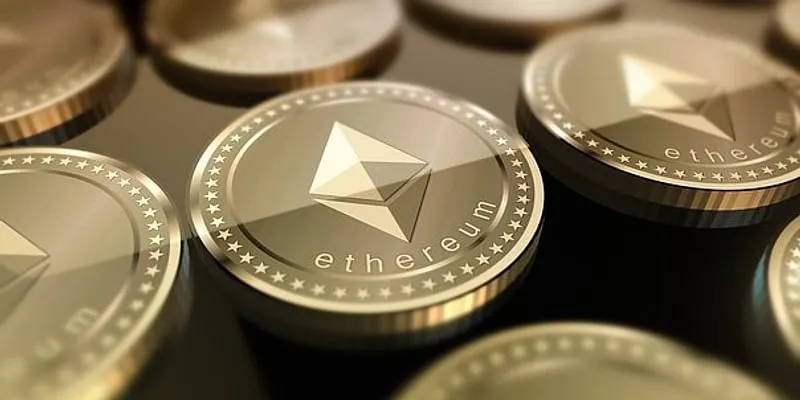What is Decentralised Finance? All you need to know about the basics of DeFi
Decentralised Finance (DeFi) is quickly emerging as a transparent and permissionless way for users to interact directly with each other. This year, the value of assets used in DeFi touched $100 billion for the first time.
For a long time, global financial systems have been largely centralised. Traditional finance has relied on centralised entities like banks to act as intermediaries, courts to settle disputes, governments to provide regulation, and so on.
As such, financial data is not publicly visible to all, and financial assets are controlled by entities that transact in them based on the end user’s instructions.
In the last few years, a new type of finance - which has no central authority and provides end users full control over their assets - has emerged.
Known as Decentralised Finance (DeFi), this type of financial system comprises financial applications built on top of blockchain networks.
As blockchains are public and open source, DeFi is a transparent and permissionless way for users to interact directly with each other in peer-to-peer networks. In a way, the code or software governing the blockchain acts as the middleman, and as blockchains run on distributed nodes, there is no singular point of failure present in DeFi.

How DeFi works
In traditional finance, a financial institution’s firewalls may be compromised and funds may be lost in a hack. Or the institution may shut down. In DeFi, Decentralised Apps (DApps) running on a blockchain network continue to function even if few or several nodes on the chain go offline.
It follows from this lack of central authority that users aren't required to input their government ID details, email, address or contact information in order to use DeFi.
Instead, users create a password when setting up blockchain-enabled wallets like MetaMask or Trust Wallet. They also get custody of a 12-word seed phrase to recover their account. During these steps, users share no personal information about themselves.
Once their wallets are set up, users can acquire crypto from exchanges like CoinDCX, WazirX, CoinSwitch Kuber, Coinbase, Binance, etc and withdraw the coins to their wallet. Once their wallets contain some crypto, users can begin using DeFi.
In the DeFi ecosystem, users can explore options for borrowing and lending, yield farming (providing liquidity in exchange for rewards), trading on decentralised exchanges/marketplaces, crypto banking services, and much more.
Smart contracts and the DeFi stack
Ethereum (ETH) is the blockchain network leading the DeFi space and most DeFi apps are built on Ethereum. This is because Ethereum has provided significant value to users through its smart contracts, which are pieces of code that self-execute when certain conditions are met.
They are essentially contracts that enforce agreements between parties. In DeFi, they act as financial contracts containing terms written in computer code.
For instance, if a user wishes to withdraw some ETH from a decentralised exchange to their wallet, a smart contract enables reliable and automatic execution of the transaction, and requires no manual supervision.
A four-layer stack enables transactions in DeFi. These are the settlement layer (base layer like Ethereum), protocol layer (standards and rules governing transactions), application layer (consumer-facing apps and services) and aggregation layer (aggregators connecting DApps).

DeFi: The future of finance?
Users are growing increasingly interested in DeFi as it provides full control over one's assets, eliminates singular points of failure, is resistant to censorship or shutdown, and democratises access to financial services.
In 2021, the value of assets used in DeFi touched $100 billion for the first time, as per DeFi Pulse data. Some leading DeFi apps include UniSwap, SushiSwap, Curve, Compound, dYdX, Aave, and more.
Despite the advantages, the DeFi industry is still in its nascent stage, and faces many challenges.
These include poor performance (blockchains are inherently slower than centralised networks), poor user experience (DeFi ecosystem is cluttered with many options and DApps are often not intuitive or easy to use), a high risk of user error, and the occasional scam.
DeFi’s global, transparent and open-source nature also poses challenges to existing financial regulations across nations. This is because countries typically craft regulation based on the notion that nations are discrete financial jurisdictions.
Billionaire investor Mark Cuban is bullish on DeFi, and believes it will pose a big challenge to traditional banks. But he admits DeFi won’t automatically end banking. CoinDCX Co-Founder and CEO Sumit Gupta also maintains that DeFi will not make banks entirely obsolete, but that banks will find a way to integrate DeFi into their systems and achieve coexistence.
As large banks around the world take notice of DeFi and its potential for disrupting traditional finance, it remains to be seen how the future of finance will play out.
Edited by Teja Lele









